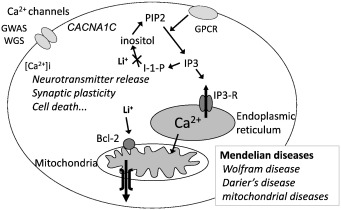And:
The physiological role of mitochondrial calcium revealed by mice lacking the mitochondrial calcium uniporter (MCU)
Here, we characterize a mouse model that lacks expression of the recently discovered mitochondrial calcium uniporter (MCU). Mitochondria derived from MCU-/- mice have no apparent capacity to rapidly uptake calcium. While basal metabolism appears unaffected, the skeletal muscle of MCU-/- mice exhibited alterations in the phosphorylation and activity of pyruvate dehydrogenase. In addition, MCU-/- mice exhibited marked impairment in their ability to perform strenuous work
The physiological role of mitochondrial calcium revealed by mice lacking the mitochondrial calcium uniporter (MCU)
Here, we characterize a mouse model that lacks expression of the recently discovered mitochondrial calcium uniporter (MCU). Mitochondria derived from MCU-/- mice have no apparent capacity to rapidly uptake calcium. While basal metabolism appears unaffected, the skeletal muscle of MCU-/- mice exhibited alterations in the phosphorylation and activity of pyruvate dehydrogenase. In addition, MCU-/- mice exhibited marked impairment in their ability to perform strenuous work


